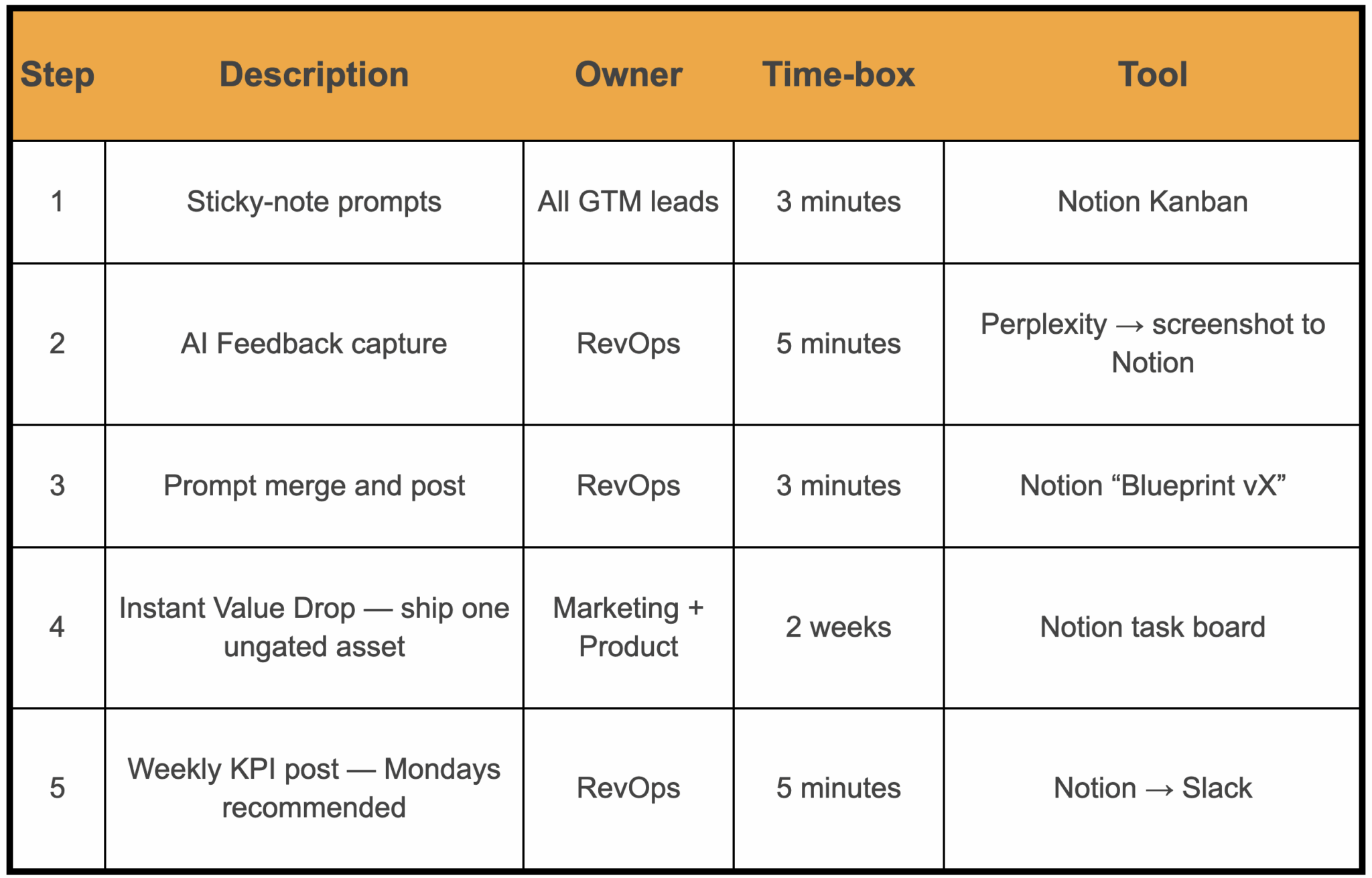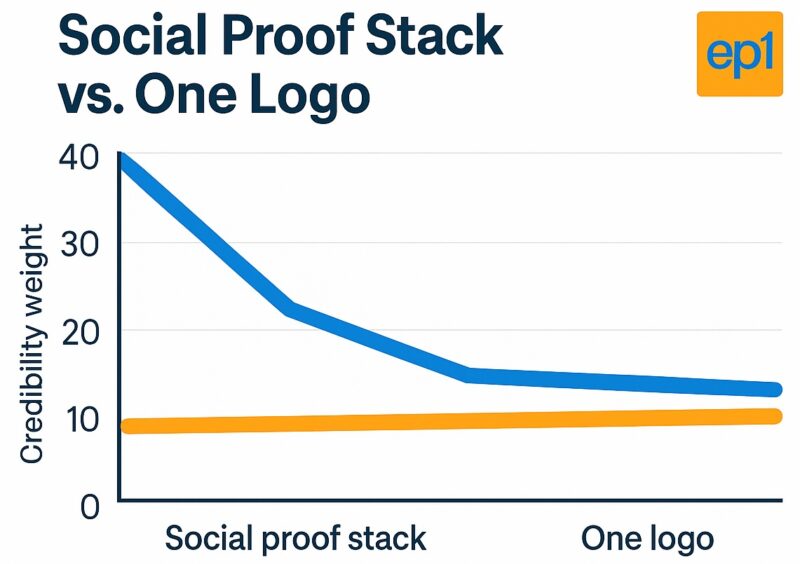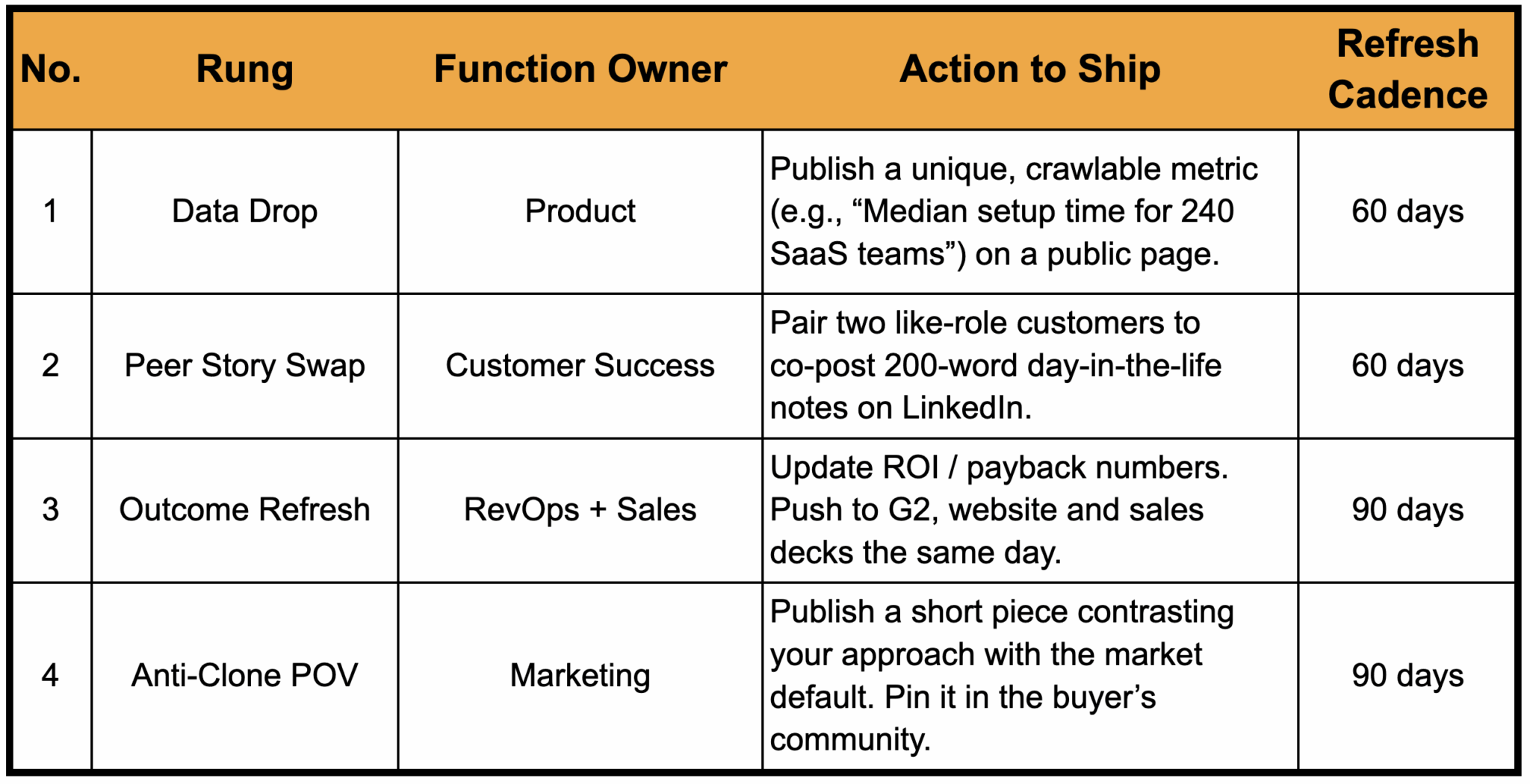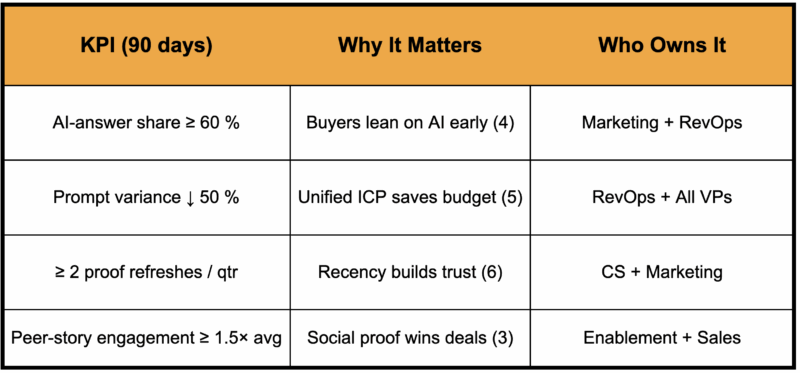Monday’s stand-up starts with a mystery: our dream prospect — an enterprise logo we’d flagged as a high-fit target months ago — just signed with a competitor. No one recalls seeing them in HubSpot, no inbound signals, no SDR pings.
By the afternoon Slack huddle, we’ve got answers. Perplexity, G2 and our BI dashboards confirm what we missed: the buyer compared us and a rival, and the rival won. No form fills. No demo requests. Just a trail of anonymous research and AI-assisted discovery.
Buyers don’t browse anymore. They consult AI agents, private peer Slacks, review sites and quick-search snippets — often before our pixel even fires. Keep optimizing for clicks and forms and you’re cleaning windows no one’s looking through.
Then → Now → Next
How did we get here — and where are we headed next? The evolution of go-to-market motions tells the story.
- Then (2020): Marketing, sales and customer support sprinted in separate lanes. Three KPIs, three decks, one confused buyer.
- Now: AI agents mine Slack threads, flag intent on G2 and ghostwrite outreach. Slack memberships among B2B buyers jumped 80% from 2021 to 2024. But even with sharper signals, customer value still lands unevenly — and the buyer remains elusive.
- Next: Momentum becomes the shared currency. A cross-functional revenue engine powers agentic marketing — a live, layered proof system that helps buyers self-educate, self-score, and still land in closed-won.
Why the old way broke
For a while, that was enough.
- SDR cadences depended on gated forms.
- CS relied on static personas.
- Product shipped features no one saw.
But AI collapsed those seams — delivering answers in one place. The company with the clearest, freshest signal wins the shortlist before a rep can even dial.
Dig deeper: How AI flipped the funnel and made GTM tactics obsolete
2 plays to help you turn theory into organizational momentum
These are connected plays — one aligns your teams on the buyer, the other builds proof that earns trust early. Run together, they turn theory into momentum.
1. Dynamic buyer blueprint
When each team defines the buyer differently, the signal gets noisy — internally and in-market. This play aligns your revenue org on a single, AI-readable buyer narrative.
Context: Each team runs its own prompts in its own tools, so the ideal buyer exists in five versions.
Objective: Hand the revenue team one crisp, testable buyer sentence and prove that the market and AI agents agree.
Desired outcomes
- Prompt variance ↓ 50 % in a quarter.
- Your brand appears in the top three in Perplexity for that shared prompt.
Prompt variance is the gap between how each function describes the same buyer in a single sentence. When variance is high, marketing’s ad copy, sales’ opener and CS onboarding aim at different targets. Mental silos harden, execution splinters and AI agents pick up a fuzzy signal — so prospects find a sharper story elsewhere.
How to run it (quarterly, in 15 minutes)

(Note: If you don’t use Notion, substitute Google Workspace or Microsoft Office 365.)
Start-up example: A five-person SaaS firm cut six ICP lines to one in a single session, shipped a 90-second ROI calculator and grew the answer share from 18% to 43% in six weeks, without increasing ad spend.
Bottom line: The feedback loop is light enough for a five-person start-up, yet structured enough for a 5,000-employee enterprise, because it scales by prompts per segment, not by headcount or martech spend.
2. Social proof-stack ladder
Buyers no longer stop at a logo. They scan for recency, relevance and proof that someone like them saw success — last quarter, not last year.
Context: One logo used to impress. Now buyers ask AI, “Who solved my problem last quarter?” Static badges die on load.
A social proof stack outperforms a single badge.
- Data proves volume.
- Stories prove relevance.
- Outcomes prove ROI.
- POV proves thought leadership.
AI models reward that breadth. Humans feel it as layered credibility. Leave a rung empty, and the doubt it covers creeps back in.
Objective: Replace single logos with a living social proof stack that AI agents can read and humans can trust.
Desired outcomes
- Refresh one rung every 60 days.
- First-meeting win-rate climbs because buyers arrive convinced.

How to run it (30-day launch)

A Slack bot pings #social-proof-stack whenever a rung updates. Marketing rolls the change into a one-slide “Fresh Proof” deck by week’s end.
Tool tip
- Build a Notion database titled “Social Proof Stack,” with columns:
- Date.
- Rung.
- Metric.
- URL.
- Owner.
- Next-refresh.
- When any row ages past 60 days, Notion automation pings the owner and posts to Slack.
Mid-market example: After one full ladder refresh, a $40 million ARR platform saw G2 traffic rise 28% while demo-to-close time fell from 45 to 32 days — fresh evidence speeds commitment.
Scoreboard: 4 numbers we share
Four shared KPIs make buyer momentum visible — and track how well we’re adapting to AI-era behavior.

Weekly GTM huddle: RevOps posts these four numbers from Notion into Slack every Monday at 9 a.m. A yellow ⚠️ appears if any metric trends incorrectly for two weeks.
Dig deeper: The hard truth about what AI will do to GTM
Derisking the marketing-finance conversation
To sustain momentum, it has to show up in the budget. That means framing GTM performance in finance’s terms — risk, upside and tradeoffs — not clicks and impressions.
- Lead with the risk: “If answer share drops three points, we lose $350,000 next quarter.”
- Show the upside: “An eight-point lift added $1.2 million in pipeline. We trimmed payback to seven months.”
- Close with a cost-neutral fix: “Refreshing proof data costs $25,000 a quarter, offset by cutting $28,000 in unused tools — approve the swap so we hold the 46% share and the $1.2 million upside.”
On your next-quarter preview, sunset one more redundant tool and reinvest half the savings in an A/B test with ad copy written from the new buyer prompt versus the legacy version.
Moving as one
When we build a unified GTM system, we meet the AI-buyer on common ground. Put that unity in motion by:
- Running the dynamic buyer blueprint to lock a single buyer story.
- Climbing the proof-stack ladder to keep proof fresh and visible.
- Posting the four shared KPIs in every weekly GTM huddle.
- Talking to finance in risk-and-cash language — not click counts.
A shared buyer view, fresh proof and one scoreboard let momentum compound — turning pipeline into closed-won, not abandoned pursuits.
Fuel up with free marketing insights.
Contributing authors are invited to create content for MarTech and are chosen for their expertise and contribution to the martech community. Our contributors work under the oversight of the editorial staff and contributions are checked for quality and relevance to our readers. MarTech is owned by Semrush. Contributor was not asked to make any direct or indirect mentions of Semrush. The opinions they express are their own.